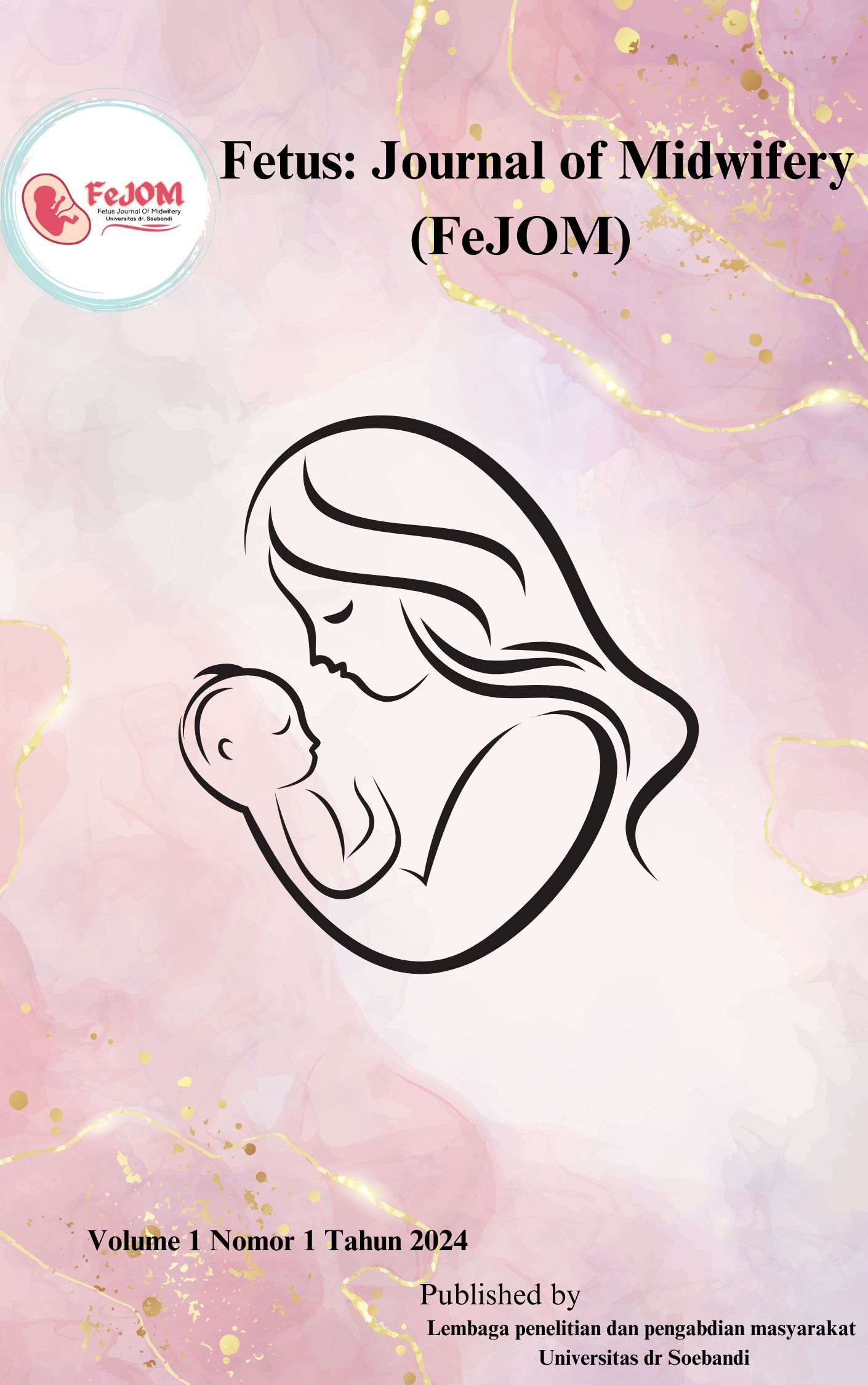THE RELATIONSHIP OF FAST FOOD CONSUMPTION WITH THE LEVEL OF PRIMARY DYSMENORHORE IN WAHID HASYIM BALUNG MA STUDENTS
DOI:
https://doi.org/10.36858/fejom.v1i1.19Keywords:
fast food, dysmenorrhea, physical activityAbstract
Dysmenorrheais pain felt during menstruation, it occurs in the uterus, hips, and waist. The cause of dysmenorrhea is a poor diet as an example of frequently eating fast food without paying attention to balanced nutritional intake. This research aims to understand the significance of the relationship between consuming fast food and the level of major dysmenorrhea in MA student Wahid Hasyim Balung. Method: This type of research carried out is correlational (relationship) to a cross-sectional approach. The total population in this study was 45 with a sample of 40 respondents. The sampling technique uses simple random sampling and data collection with questionnaires. Univariate analysis of frequency distribution as well as percentage, bivariate analysis of Spearman rank and Contingency Coefficient. Results: Most (55%) female students consumed fast food and nearly half (42.5%) experienced some degree of primary dysmenorrhea. From the analysis, P-value (0.004) < α (0.05) hereby H0 is rejected which means there is a relationship and the contingency coefficient test obtained a value of 0.455 which means the relationship is quite strong. Conclusions: there is an association of fast food consumption with the rate of primary dysmenorrhea. Advice for respondents is expected to limit consumption of fast food so as not to cause menstrual pain (dysmenorrhea).
References
Adinda Aprilia, T., Noor Prastia, T., & Saputra Nasution, A. (2022). Relationship between physical activity, nutritional status and stress level with the incidence of dysmenorrhea in female students in the city of Bogor. Promoter, 5(3), 296–309. https://doi.org/10.32832/pro.v5i3.6171
Republic of Indonesia Ministry of Health. (2018). Republic of Indonesia Ministry of Health. http://www.depkes.go.id/
Destariyani, E. (2023). The relationship between menstrual duration and family history of dysmenorrhea with the incidence of dysmenorrhea in adolescent girls in Bengkulu City. Journal of Midwifery, 12(1), 22–26. https://doi.org/10.35890/jkdh.v12i1.27 2
District Health Office. Jember. (2020). Data on Menstrual Disorders in Adolescent Girls. https://dinkes.jemberkab.go.id
Provincial Health Office. East Java. (2019). East Java province health profile. https://dinkes.jatimprov.go.id/
Fitri, HN, & Ariesthi, KD (2020). The Influence of Dysmenorrhea on the Learning Activities of Female Students in the DIII Midwifery Study Program.
CHMK Midwifery Scientific Journal, 3(April), 159–164.
Khotimah, H., & Lintang, SS (2022). Non- Pharmacological Therapy to Treat Dysmenorrhea Pain in Adolescents. Faletehan Health Journal, 9(3), 343–
https://doi.org/10.33746/fhj.v9i3.499 Kurniawan Fera.T, Chairuna, Effendi, H.
(2017). Relationship between Age of Menarche, Length of Menstruation, and Nutritional Status with the Occurrence of Dysmenorrhea in MA Nurul Hikmah Students.
Larasati, TA, A., & Alatas, F. (2016). Primary Dysmenorrhea and Risk Factors for Primary Dysmenorrhea in Adolescents. Majority, 5(3), 79–84.
Mivanda, D., Follona, W., & Aticeh, A. (2023). The Relationship between Stress Levels and Fast Food Consumption Behavior on the Incidence of Dysmenorrhea in Adolescent Girls. Muhammadiyah Journal of Midwifery, 4(1), 34. https://doi.org/10.24853/myjm.4.1.34- 46
Mohamadirizi, S., & Kordi, M. (2015). The relationship between food frequency and menstrual distress in high school females. Iranian Journal of Nursing and Midwifery Research, 20(6), 689–693.
https://doi.org/10.4103/1735- 9066.170000
Nursalam. (2020). Nursing Science Research Methodology (5th Edition). Salemba Medika.
Pejcˇic, A., & Jankovic´, S. (2016). Risk factors for dysmenorrhea among young adult female university students. Ann Ist Super Sanità, 47(4), 363–372. https://doi.org/10.4415/ANN
Rambe, N., & Suryani, E. (2020). The Relationship between Knowledge and Parental Income and the Nutritional Status of Underweight Adolescent Girls at SMP Negeri 1 Portibi, Portibi District, North Padang Lawas Regency, North Sumatra Province, 2017. Journal of Public Health and the Environment, 2(2), 55–64. http://e-journal.sari- mutiara.ac.id/index.php/Kesehatan_M asyarakat/article/view/641/575
Salbiah. (2014). Reducing Pain Levels During Menstruation Through Abdominal Stretching Exercises. Journal of Nursing Science, 72–82.
Silalahi, F. (2022). Description of the level of knowledge, attitudes and behavior of students at the Faculty of Medicine, HKBP Nommensen University, Medan regarding fast food consumption.
Thania, WF, Arumsari, I., & Aini, RN (2023). Fast Food Consumption is Associatedwith Primary Dysmenorrhea in Adolescents in Urban Areas. Muhammadiyah Journal of Nutrition and Food Science (MJNF), 4(1), 37. https://doi.org/10.24853/mjnf.4.1.37- 45
Wardani, AK (2021). Relationship between frequency of consuming fast food and the incidence of dysmenorrhea. Indonesian Journal for Health Sciences, 01(02), 7–13.
https://eprints.ums.ac.id/94970/1/NAS KAH PUBLICATION.pdf
Zahra Amany, F., Ampera, D., Emilia, E., & Mutiara, E. (2022). The Relationship between Nutritional Status and Fast Food Consumption Patterns and Primary Dysmenorrhoea in Adolescent Girls at Al-Azhar Private Middle School Medan. Sport and Nutrition Journal, 4(2),

Downloads
Published
How to Cite
Issue
Section
License
Copyright (c) 2024 Ma'isyatul Mukarromah

This work is licensed under a Creative Commons Attribution-ShareAlike 4.0 International License.



